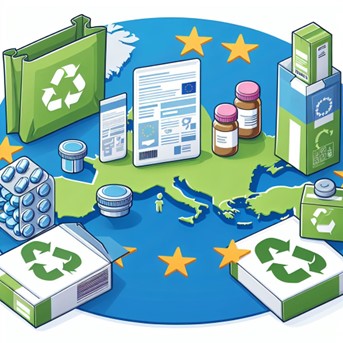New Packaging Regulation PPWR: What Does It Mean for You and Your Business?
In April 2024, the European Parliament adopted the new Packaging and Packaging Waste Regulation (PPWR). This regulation, expected to come into force in the EU no earlier than 2026, sets strict new targets for packaging at all stages of the value chain. The goal is to reduce the environmental impact of packaging, strengthen the internal market, and establish robust and circular value chains for packaging across the EU. For many businesses, PPWR will bring significant changes, and here we provide an overview of the main objectives and implications.

Stricter Requirements for Reducing Packaging Waste
One of the main goals of PPWR is to reduce the amount of packaging waste generated within the EU. To achieve this, the regulation will introduce restrictions on the types of packaging allowed and encourage the implementation of reusable and refillable packaging solutions. This means that businesses will need to adapt to requirements for packaging that can be used multiple times while also meeting consumer demands for sustainable products.
To support a cost-effective, circular economy, all types of packaging on the market must be recyclable by 2030. This means that producers will need to prioritize recyclability in the design process, involving strict rules for material choice and composition.
EU-Wide Harmonization of Standards and Rules
PPWR aims to standardize packaging regulations across the EU so that all businesses operate under the same requirements and competitive conditions. Harmonized rules will include common standards for labelling, void space, and mandatory recycled content in packaging. For companies operating across EU borders, this will provide a more unified approach to packaging use and reduce trade barriers within the internal market.
Exemptions for Medicinal Products and Medical Devices
Although the regulation has a broad scope, certain exemptions are provided for medicinal products and medical devices. These exemptions are necessary to ensure a high level of protection for public and animal health, as well as the security of medical supplies. Medicinal products, for example, are exempt from requirements for minimum recycled plastic content in immediate packaging. However, this exemption will only apply until January 1, 2035, after which it will be reviewed. This means that the industry should be prepared for the possibility that PPWR’s recyclability requirements could also apply to medicinal products and medical devices in the future.

What Does This Mean for Your Business?
PPWR sets ambitious goals for businesses operating within EU borders. Once the regulation is in force, countries will have 18 months to incorporate it into national legislation. For businesses, this means it is important to begin preparations now. New requirements for recyclability, the use of recycled materials, and options for reusable packaging will require both investment in new materials and an assessment of current packaging solutions.
A Green Future for Packaging
PPWR represents a significant change in how packaging is designed, consumed, and processed in the EU. The goal is clear: a packaging industry that both safeguards the environment and robustly supports a circular and competitive market. Grønt Punkt emphasizes that PPWR will have a substantial impact on the industry, and for all those in the packaging sector, preparation and adaptation to the new requirements will be essential for future competitiveness and sustainability.
For more information on specific requirements and how they may impact your business, stay updated through the EU and relevant industry organizations like Grønt Punkt.